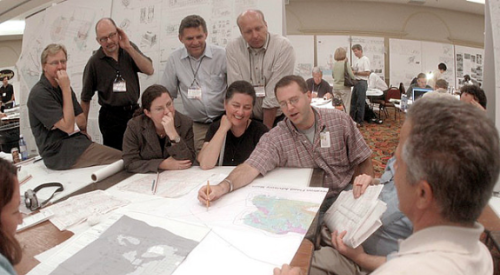The U.S. census seems only slightly more useful than a finger in the wind to most builders, especially smaller builders with no formal research department.
ôBuilders usually build for what they believe demand is, but they never have any statistics,ö says John Burns of John Burns Real Estate Consulting in Irvine, Calif. ôAll across the country, theyÆre designing homes for, say, a young family, and theyÆre finding that their buyers are young, single women or retirees.ö
By cross-referencing and massaging census data from any U.S. county with the answers to housing-related questions, Burns created a method to determine county-specific buying activity by these ôlife stagesö:
Young families: Families (including single-parent) with youngest child less than 5 years old
Mature families: Families (including single-parent) with youngest child age 5 or older
Couples 55: Married, childless couples younger than 55
Singles: Childless singles younger than 55
Empty nesters: Age 55 to 64 with no children
Retirees: Age 65-plus with no children
Burns also tracks subcategories within each category, such as young parents, young single moms and young single dads in the young families category.
Click here to see the Forecasted Home Buying Demand by Life Stage
Custom-Made for Production Planning
Burns sees a data vacuum and wants to fill it, for a fee (his price varies by the size and scope of his research). In return, he can help housing industry clients improve planning, designing, marketing and merchandising for faster sales and higher profits. His insights into county-level details can uncover surprises and support major decisions.
ôOne client, a large developer, was 70% oriented to cater to families,ö Burns says, ôand after viewing research customized for that area, they backed that figure down below 60% because so much of the activity in the price points they intended to market was for people without children.ö
Burns suggests that in addition to convincing internal skeptics about major decisions, builders can use his data to get the jump on competitors slower to recognize trends.
Bucking National Trends
Burns also uncovered national surprises. For example, married couples younger than 55 with no children now buy more homes than young families. While young families traditionally form a bread-and-butter market, Burns thinks itÆs funny/serious that ôWall Street is telling the public builders to cater to young families, but young families are only a small piece of the mix.
Click here to see the Percentages of Total Households versus Buying Demand
ôToll Brothers is pretty much alone in focusing on higher-end buyers, and theyÆve been criticized by Wall Street because of that. But this research supports TollÆs contention because so much more home buying is done by older people with more money than younger families.ö
Another finding: The greatest rise in 2004 home sales will come from empty nesters, mature families and retirees.
The number of sales will vary by locale, but Burns says distribution of sales across these populations will hold fairly consistent across the nation.
Another parsing on the national level estimates that mature families will account for 26.3% of 2004 housing sales. More noteworthy:
The second-place group, childless couples younger than 55, represents only 14.4% of all households but will command 22.6% of housing sales. Clearly, these couples have extra buying power without the cost of college educations hanging over them.
ôThis isnÆt something you can just look up in the census,ö Burns says. ôIt took weeks of massaging the data and turning it into real estate terms from demographic terms.ö










